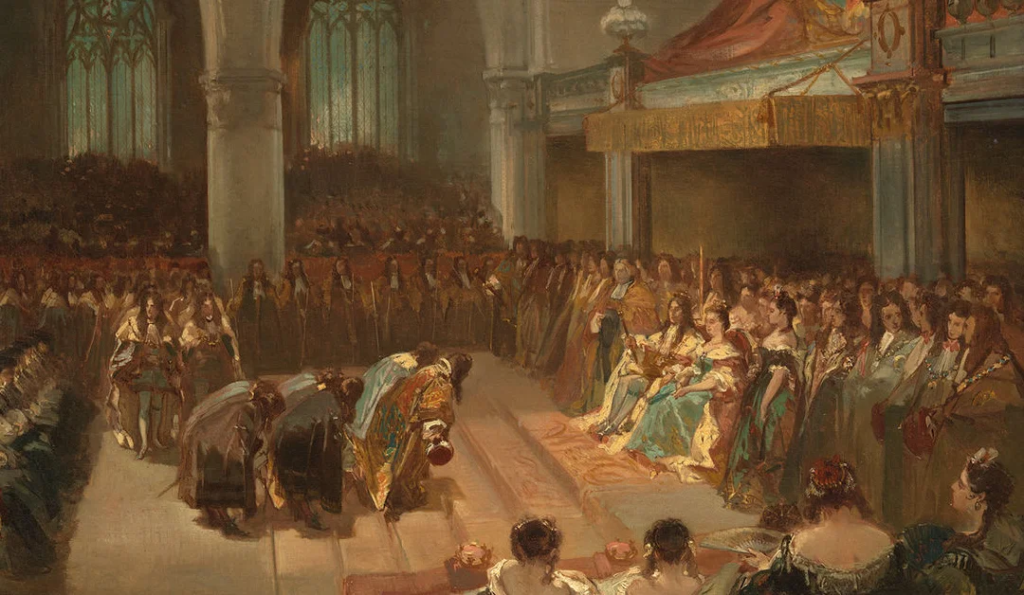The year 1689 marked a turning point in colonial American history. Without bloodshed or war, the people of New England removed an unpopular royal government and reclaimed their traditional rights. Known as the New England Bloodless Revolution, this quiet but powerful uprising restored local control and changed the way the English colonies were governed.
While it may not be as famous as the American Revolution that followed nearly a century later, the Bloodless Revolution set critical precedents for colonial self-rule and resistance to authoritarian power. It showed that colonists were willing to defend their rights—even without violence—against outside control.
This article explores the causes, events, and long-term effects of the New England Bloodless Revolution of 1689.
Causes of the New England Bloodless Revolution
To understand the revolution, we first need to look at the growing conflict between the English crown and its colonies in the 1680s.
The Creation of the Dominion of New England
In 1686, King James II decided to tighten royal control over the American colonies. He merged several New England colonies—Massachusetts, Plymouth, Rhode Island, Connecticut, and later New York and New Jersey—into a single political unit called the Dominion of New England.
This move eliminated existing colonial governments and placed all authority under one royal governor appointed by the king: Sir Edmund Andros.

Unpopular Rule Under Governor Andros
Sir Edmund Andros quickly alienated the colonists. His rule was marked by:
- New taxes imposed without the approval of local assemblies
- The end of town meetings and local political participation
- Strict enforcement of trade laws that harmed the colonial economy
- Support for the Church of England in a largely Puritan region
Colonists saw these actions as a clear threat to their rights. For many, the Dominion represented an unwanted shift toward autocratic rule.
The Glorious Revolution in England
In 1688, political change in England sparked new hope for colonists. King James II was overthrown in what became known as the Glorious Revolution. He was replaced by William III and Mary II, who promised to rule with the consent of Parliament and respect the rights of English subjects.
When word of the Glorious Revolution reached New England in early 1689, colonists viewed it as their opportunity to resist the Dominion and reclaim local control.
The Uprising in New England
On April 18, 1689, the people of Boston rose up against the Dominion government. Local militia, townspeople, and colonial leaders united to arrest Governor Andros and other royal officials.
The uprising was quick, well-organized, and remarkably peaceful. No shots were fired, and no lives were lost—earning it the name the Bloodless Revolution.
Colonial leaders formed a temporary government called the “Council for Safety,” which took control until the old governments could be restored.
Restoration of Colonial Governments
In the months that followed, the colonies that had been absorbed into the Dominion began to re-establish their old systems of government. While not all colonies returned to their exact previous forms, the general direction was clear: a return to self-rule and representative government.
- Massachusetts received a new royal charter in 1691. While it still had a royal governor, it now also had an elected assembly with real power.
- Connecticut and Rhode Island resumed their previous charters, which had allowed for full local self-governance.
- Other colonies also reinstated elected legislatures and town meetings.
This restoration of local control was a direct rejection of the centralized power structure that had existed under the Dominion of New England.
Changes in Colonial Governance After 1689
The New England Bloodless Revolution had lasting effects on how the colonies were governed. It wasn’t just a rejection of one bad governor—it was a turning point in colonial thinking about rights, authority, and governance.
Rise of Representative Government
Colonists increasingly viewed representative government as a basic right. They expected local assemblies to have a real say in taxation, lawmaking, and administration.
Royal governors continued to be appointed, but their power was limited. They could no longer ignore the voice of the colonists without risking political backlash.
Growth of Political Awareness
The revolution awakened a deeper political consciousness among the colonists. People began to talk more openly about liberty, consent of the governed, and the limits of royal power.
Ideas that had once seemed radical—such as the right to resist unjust rulers—became more acceptable and widespread. These ideas would later become central to the American Revolution.
Shift in the Relationship Between Colonies and Crown
Although England still claimed authority over its colonies, the relationship had changed. The colonists had shown that they could and would take political action to defend their rights.
The Crown, learning from its mistake with the Dominion, became more cautious in its approach to colonial administration. Future royal policies were more carefully considered, though tensions would never fully disappear.

Lasting Legacy of the Bloodless Revolution
The New England Bloodless Revolution didn’t lead to full independence, but it did set the stage for a new era in colonial America. It restored confidence in self-government and reminded the people of their power to bring about political change.
It also helped to establish core principles that would guide the colonies for generations:
- Government should be accountable to the people
- Rights and liberties matter more than royal decrees
- Peaceful resistance can be a powerful tool for change
These principles reappeared in later struggles—from opposition to the Stamp Act to the Declaration of Independence.
Timeline Summary
Here is a brief timeline of key events surrounding the Bloodless Revolution:
- 1686 – Dominion of New England is established by King James II
- 1687 – Governor Andros restricts local rights and imposes taxes
- 1688 – Glorious Revolution in England replaces King James II
- April 1689 – New England colonists overthrow Andros peacefully
- 1691 – Massachusetts receives new charter with elected assembly
- Early 1700s – Representative government becomes standard in colonies
Conclusion
The New England Bloodless Revolution of 1689 was a quiet yet powerful moment in early American history. It proved that colonists would not accept unchecked authority, even from the English crown. By peacefully removing a deeply unpopular regime and restoring local control, New Englanders demonstrated their commitment to self-rule and laid the foundation for future democratic ideals.
Though often overshadowed by later events, the revolution of 1689 played a crucial role in shaping the political culture of the American colonies—and in planting the seeds of liberty that would grow into a full revolution less than a century later.
Do Follow USA Glory On Instagram
Read Next – The Blue Highway Runaway Slaves: Secret Maritime Escape Routes






